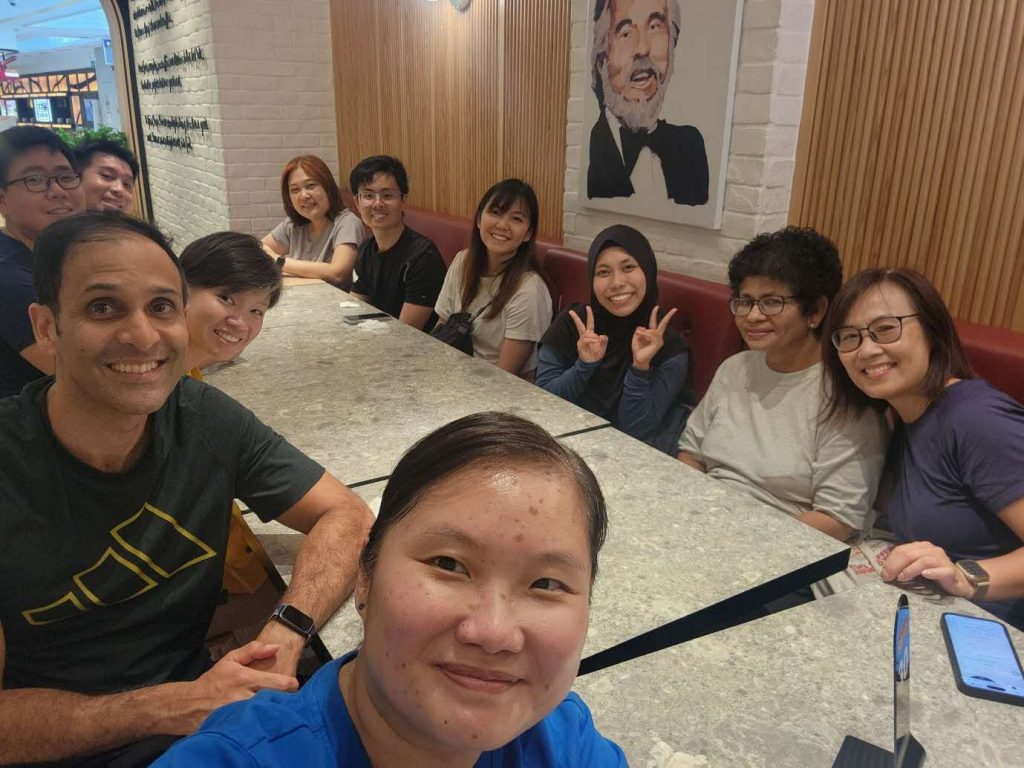A Day in the Life at MOHT series
One of MOHT’s strengths stems from having a pool of talents from diverse backgrounds, facilitating the cross-diffusion of learning and insights within the organisation and across the ecosystem.
“A Day in the Life at MOHT” is a MOHT blog series where featured colleagues relate how their individual talent, experience and practice has enriched MOHT’s tapestry of contributions towards the transformation of Singapore’s healthcare.
In the eighth edition, we look at a day in the life of data analyst, Tan Huee Ming from the Healthier SG Implementation Office at MOHT.
- Tan Huee Ming
Hi I’m Huee Ming, and I’m a senior data analyst at the Healthier SG Implementation Office’s (HSI) Data Team. Although my education was in economics and mathematics, my interest in big data analytics led me to pivot from a career in financial services to a career in public healthcare – first with MOH’s Crisis Strategy and Operations Group (CSOG)’s data fusion team, and now, with the Healthier SG Implementation Office.
As a senior analyst with the HSI data team, I help transform complex health data into actionable insights that improve the life and health of Singaporeans, as part of the national Healthier SG movement. My journey with HSI started post-Covid, in 2022, where I spearhead efforts to generate comprehensive operational data and enable downstream users with data for analysis.
Transforming Data into Insights for Healthier SG
I’m part of an agile three-person team. Each day starts with a quick team stand up where we share updates, discuss challenges, and agree what to focus on next.
My immediate task is to gather data from clinical visits to identify several key patient groups and assembling a phone list of patients to invite to the HSG initiative. We identify different patient groups, such as those with chronic conditions like diabetes or heart disease, as well as healthy individuals. This helps us prioritise outreach efforts, especially for seniors. These groups are then categorised to facilitate a batch invitation process, prioritising elderly of the first group for early enrolment. Having identified the necessary datasets for the use case, I will engage and collaborate with the data owners across agencies to request and secure the data we need to measure the effectiveness of Healthier SG’s outreach, enrolment and post-enrolment efforts and activities such as regular GP visits and health screening.
Data Wrangling- Making Sense of Data
When the data arrives from our various sources across polyclinics, Synapxe and the Health Promotion Board (HPB), it is in various formats with different definitions and time periods so I need to review and clean it to ensure accuracy and readiness for analysis. This means I need to group medical diagnoses, create age categories, and flag key conditions and limitations in the datasets. I also perform preliminary quality checks and verify data completeness, to set the stage for the work ahead.
In the data cleaning phase, I ensure accuracy by standardising formats and categories to make the data easier to analyse. This could include categorising diagnoses such as Diabetes (D), Hypertension (H) and Dyslipidaemia (L) into broader disease groups for example DHL, deriving age groups from birth dates, or creating flags for specific conditions or treatments such as cancer screening and follow-ups where required. These categories or what we call “features” become powerful tools for analysis, allowing us to reveal meaningful patterns and insights.
Based on our analytical and operational needs, I document the standardised output in the form of a data schema. The coordination with upstream providers from Regional Health System Polyclinics, Agency for Integrated Care (AIC), HPB and MOH counterparts – along with the iterative process of updating the data schema – ensure our schema is both theoretically sound and applicable.
Collaborative Problem-Solving with Python
Following the launch of Healthier SG, our team broadened our focus to include the tracking and monitoring of key performance indicators by way of extracting insights from Health Plans and Care Reports. The Health Plan contains goals that residents set with their doctor when they sign up to Healthier SG whereas the Care Report contains a list of care components such as blood sugar, blood pressure and cholesterol levels the doctor inputs for the resident as they flourish in their Healthier SG journey which they can use to track their progress against the goals they set up in their Health Plan with their GP.
Due to data processing limitations, to optimise, we initially focused on two key moments of residents’ Care Reports: the initial and most recent health measurements. This approach also helped us clearly compare health outcomes before and after an intervention.
However, this two-point comparison had its drawbacks. By looking only at the first and last measurements, we missed important details about how someone’s health changed in between. It also made it harder to identify overall trends across the population or spot patterns in health changes over time.
To overcome these issues, I experimented with creating simpler, more focused tables. These tables were designed to make it easier to analyse the data and display it in dashboards. While reviewing samples of care reports from different clinic systems, I noticed a recurring issue: duplicate information across patients.
To avoid duplication in the data, I created a system to ensure each patient’s information was unique. This made the analysis smoother and more reliable. Once these unique keys were in place, our team used Python to automate the data extraction process. By working together, we significantly improved both the efficiency and speed of the workflow.

Building on our previous efforts, we are transitioning to use MOH Consolidated Data Repository (MCDR), one of our important data resources. As part of my Exploratory Data Analysis (EDA) using Impala and Hive, I provide feedback to data engineers on issues identified, request a sandbox environment for us to save our custom tables to optimise query execution and efficiency.
The Impact of My Work: Why I Do What I Do
I’m thrilled to have played a part in Healthier SG’s journey to reaching over a million enrollees. As we celebrate this significant milestone, I’m eager to dive deeper into the data to uncover insights that will help us improve and expand the program even further.
Work-Life Balance: Beyond the Office
At MOHT, it is not just about work. There are various initiatives and opportunities for us to take healthy breaks from work. In August, our team took a morning walk through Gardens by the Bay. Surrounded by stunning greenery and iconic views, it was a chance to recharge and bond outside the office. This opportunity to form connections with teammates is a reminder that teamwork thrives both in and out of the office.
Conclusion
As Healthier SG continues to evolve, I am excited to explore new ways to harness data for better public health outcomes. Whether it is through refining our dashboards or diving into new challenges, I look forward to making an even greater impact.

Picture 1 – Huee Ming, second row, third from left

Picture 2 – Huee Ming, back left

Picture 3 – HSI data sprint planning: Left to right, Lowell, Huee Ming, Salman, Jun Jie, Dalen